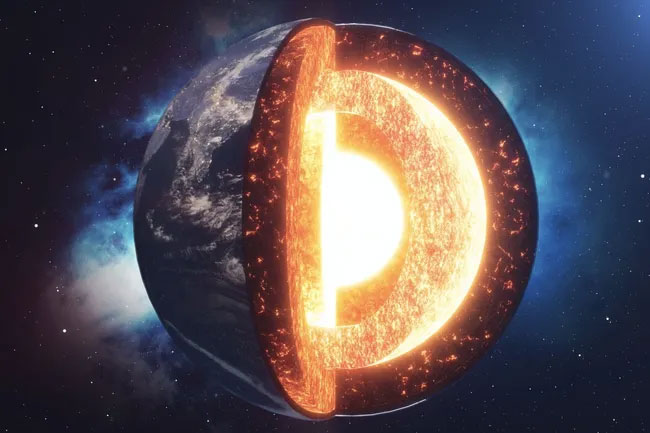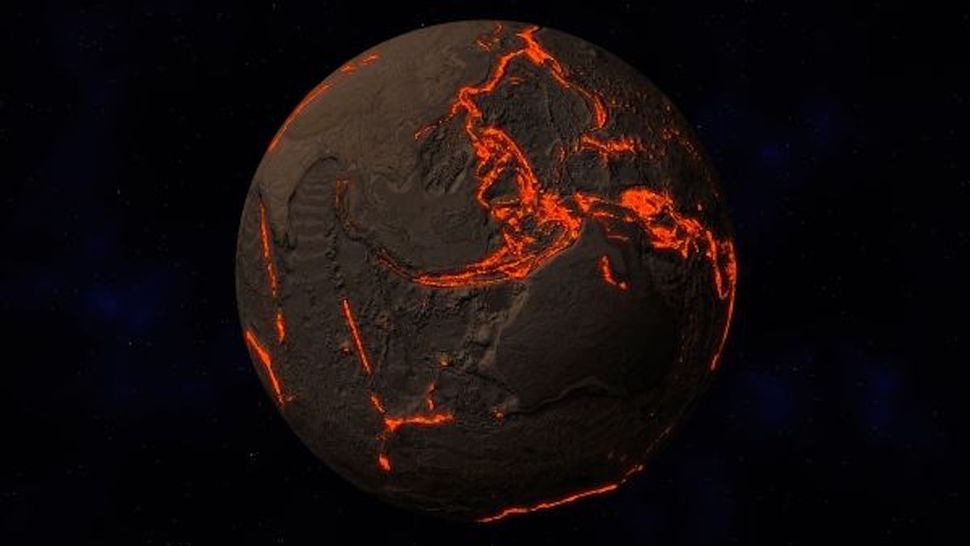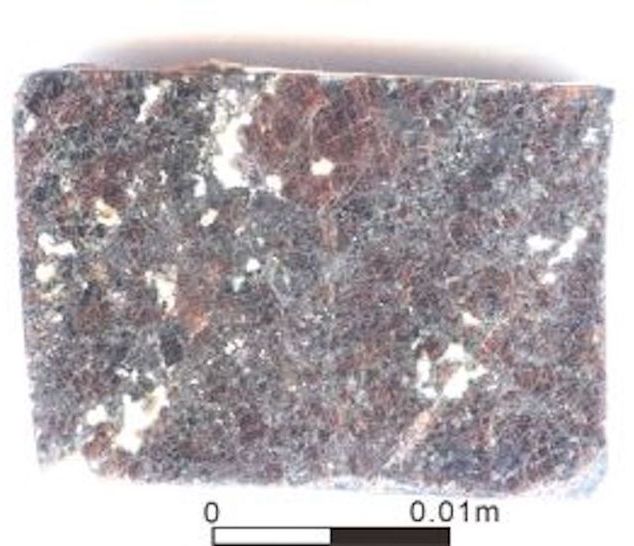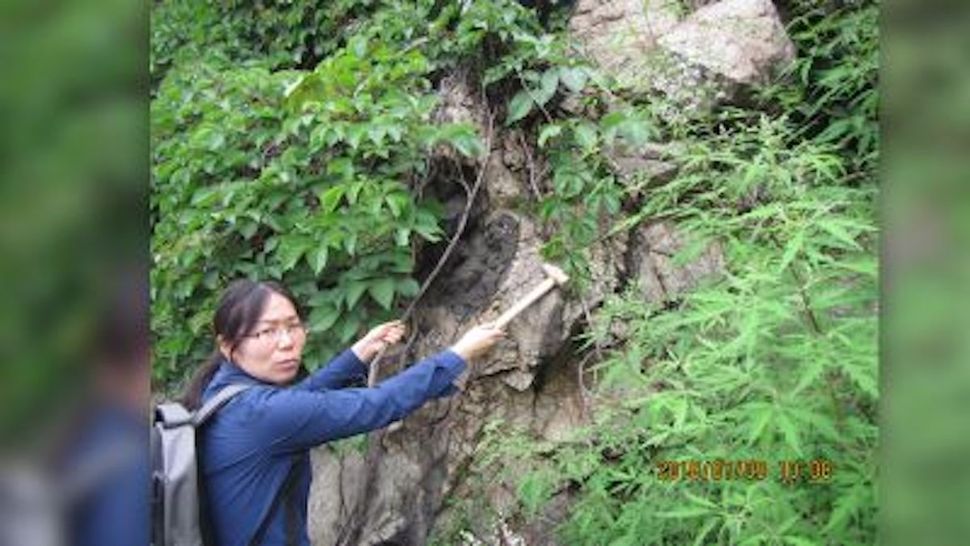New research suggests that plate tectonics began earlier than 4 billion years ago — shortly after Earth formed. New research suggests that plate tectonics, which causes earthquakes, mountain formation and the separation of continents, may have begun when Earth was just forming — much earlier than many scientists thought.
A new study suggests that plate tectonics began more than 4 billion years ago — shortly after the planet formed 4.5 billion years ago. During this era, known as the Hadean, Earth was fresh and scorching hot, with an atmosphere of ammonia and methane saturated with enough water to eventually condense into a planet-scale ocean. During this period, Earth cooled enough to have a solid outer crust.
Today, that crust is shaped by the grinding motion of tectonic plates as they move over the warmer, more mobile mantle below. But no one knows for sure when this arrangement of plate tectonics first began. Previously, researchers suggested that it began in Hadean times, almost immediately after the crust cooled. Others think that plate tectonics began about 3.2 billion years ago, when geochemistry revealed some key changes in the crust’s composition. Others argue that it’s an even more recent phenomenon, evolving to its modern form over the past couple of billion years.
Scientists have struggled to determine exactly when plate tectonics began because there are no surviving rocks older than 4 billion years, so the only direct window into the Hadean period is tiny, tough crystals known as zircons, the oldest of which date back 4.4 billion years. A subset of these crystals, known as S-type zircons, can reveal the presence of plate tectonics. These special zircons are crystals that form in sedimentary rocks on land, are then pushed into the mantle by tectonics, and reappear in metamorphic granites.

Illustration showing the layers of the Earth and its core
The problem is that S-type zircons cannot be easily identified by a single feature; instead, a whole range of trace elements must be used.
In a new study published July 8 in the journal PNAS, the researchers used a machine learning model to simplify this task. First, the scientists fed the model data from 300 zircons of known origin, then tested the model’s ability to determine whether another 74 zircons were S-type or not. Once the model had been trained to differentiate between zircon types, the team then applied it to 971 new zircons from the Jack Hills in Australia, where most of the oldest zircons on Earth have been found.
The results showed that 35% of the Jack Hills zircons were S-type, some dating back 4.2 billion years, suggesting that plate tectonics moved rocks from the crust to the mantle and back again during the Hadean.
The study isn’t the first to hint at very ancient tectonic movement. A 2023 experiment that melted rocks at high temperatures found that the oldest continental crust was formed by subduction — the process of one tectonic plate sliding beneath another. Some studies even suggest that early continents may have existed during the Hadean.
But the new study probably won’t settle the controversy. Chris Hawksworth, a geochemist at the University of Bristol who was not involved in the new study, told Science Magazine that forces other than plate tectonics, such as giant meteorite impacts, could also have moved rocks between the crust and mantle in Earth’s early days.
Evidence of ‘modern’ plate tectonics dating back 2.5 billion years found in China. Rare minerals indicate ancient subduction zone.
A new study has found that a unique rock formation in China contains clues that tectonic plates were subducting or sinking under other plates during the Archean era (4 billion to 2.5 billion years ago), just as they are doing today, the journal Proceedings of the National Academy of Sciences reported.
This 2.5-billion-year-old rock, known as eclogite, is rare, forming when oceanic crust is forced deep into the mantle (the layer between the crust and core) at relatively low temperatures. This type of high-pressure, low-temperature rock is “mostly limited to subduction zones on modern Earth.

Illustration of the early Earth showing plate tectonics. Zoonar GmbH / Alamy
The study has identified the oldest known eclogites from an ancient mountain belt found in Earth’s oceanic crust, the researchers say. The next oldest rocks of this kind — 2.1 billion-year-old rocks in the Democratic Republic of Congo — are about 400 million years younger, the researchers say.
While this isn’t the oldest evidence of plate tectonics known (a 2021 study, for example, dated plate tectonics to about 3.6 billion years ago), the new discovery represents a valuable source of data showing that tectonic plates were subducting under each other in the “early” days of Earth’s existence, at least from a geological perspective.
Tectonic plates — the moving plates that make up the Earth’s outer crust — are responsible for cycling materials and elements from deep within the Earth to its oceans, surface, and atmosphere. For decades, the research team has been working to understand the early history and evolution of the Earth, from the time it formed and cooled from a molten ball of magma in space, to when it solidified into a rigid outer crust that evolved into the plate tectonic system we have today.

Archean eclogite slab with red garnet and green pyroxene from Shangying, China. Lu Wang
Tectonic plates are critical to the heating of the planet. The shifting tectonic plates cause heat to be lost from the interior, much like bread floating and moving in a pot of simmering stew below. Whether the transition to a plate-tectonic Earth occurred early or whether the planet evolved through different stages dominated by different heat-loss mechanisms is one of the most unresolved and debated questions in Earth science today.
That’s why, over the past 20 years, the research team has been mapping Archean Eon rocks spanning about 990 miles (1,600 kilometers) of northern China — an ancient mountain belt called an orogen that marks the spot where two tectonic plates collided about 2.5 billion years ago.
Many features of these rocks indicate that this ancient mountain belt was formed by the interaction of tectonic plates. For example, fragments of oceanic crust called ophiolites are trapped in the ancient collision zone, as are highly deformed mixtures of rocks called mélanges (French for “mixtures”) that mark where the plates collided. The team also found large folded structures called nappes that plate tectonics had pushed out for hundreds or thousands of miles.

A rock formation containing eclogite (a dark layer with red garnet and green pyroxene) from the Archean Eon interbedded with garnet-bearing metagabbro from Shangying, China. Lu Wang
The discovery of eclogites in mélange indicates that a tectonic plate of oceanic crust has been subducted beneath another plate, undergoing metamorphism—that is, changing its composition, texture, or internal structure under the influence of heat and pressure—as it descended deeper into the mantle.
It is rare to find eclogites from the Archean, which has led to the claim that modern plate tectonics did not operate in the Archean. Thus, the discovery of eclogite, a key indicator of deep and cold subduction, is very important.
Laboratory analysis of eclogites from the site showed that they formed at a spreading ocean ridge about 2.5 billion years ago, were transported across the ocean floor, and then forced into the mantle by subduction. Microstructures in the minerals garnet and clinopyroxene indicate that they reached temperatures of 1,458 to 1,634 degrees Fahrenheit (792 to 890 degrees Celsius) and high pressures of 287,000 to 355,000 pounds per square inch (19.8 to 24.5 kilobars).

Lu Wang discovers dense growth at an Archean eclogite site in Shangying, China. Timothy Kasky
These figures suggest that the eclogites were subducted to depths of at least 40 miles (65 kilometers). In other words, the results are similar to minerals found in modern subduction zones, Kusky and Wang said. Eventually, the pressure of two colliding tectonic plates forced the dense rocks back to the surface.
Still, the findings aren’t particularly surprising or even all that new, said Roberta Rudnick, a professor of earth sciences at the University of California, Santa Barbara, who was not involved in the study. “It’s not particularly new, in my opinion,” as other researchers have reported, just as ancient eclogites and eclogite minerals trapped inside diamonds that escaped through volcanic pipes have been “very well studied for decades.”




